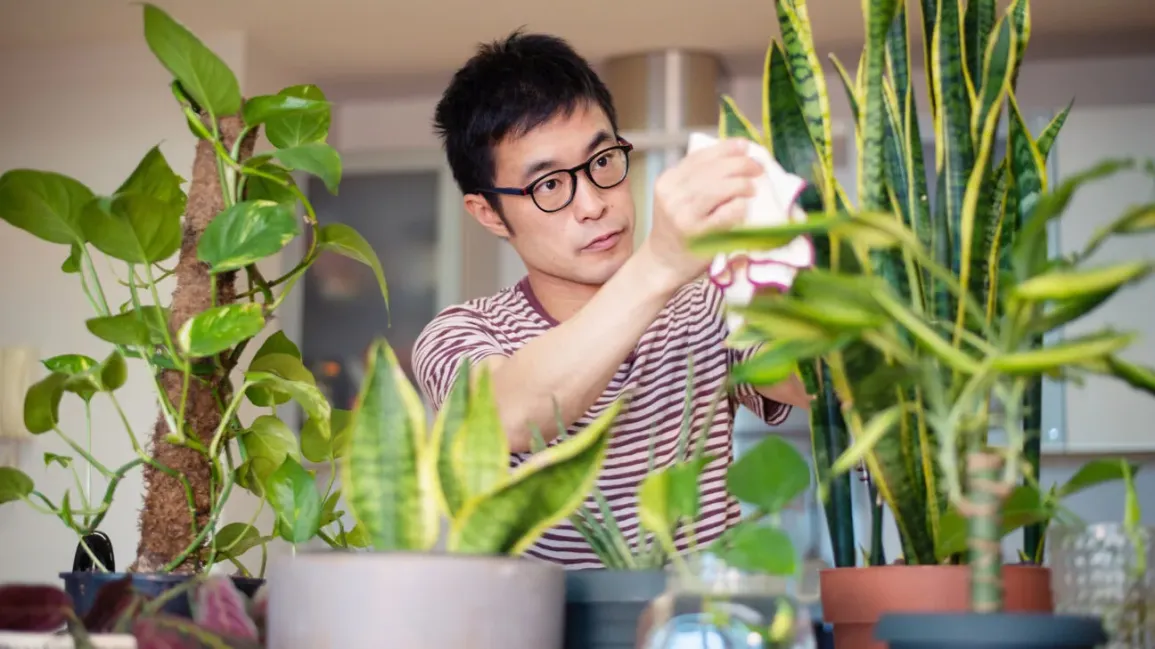
Houseplants add an exciting splash of green to any home or office – not to mention offering unexpected benefits!
Care of houseplants can help alleviate some of the signs and symptoms associated with stress, while certain plants can even increase mood!
To successfully introduce new houseplants into their environment, it is crucial that they gradually adjust. Begin by placing them in a protected, non-sunny spot before gradually increasing exposure with sunlight.
1. Improves Air Quality
Houseplants not only add visual appeal to any room, they are also beneficial in purifying the air, regulating humidity and providing oxygen. According to NASA research, certain plants are capable of filtering out toxic substances from the atmosphere such as formaldehyde found in carpets, vinyl and grocery bags; as well as benzene and trichloroethylene found in synthetic fibers, solvents and paint. Plant roots absorb these pollutants into their soil where microorganisms break them down further.
Indoor air quality often worsens than outdoor, due to pollution and volatile organic compounds (VOCs). Opening windows is one way of improving indoor air quality; however, sometimes this may not be feasible or practical, particularly during the colder winter months.
English Ivy, Monstera and Calathea houseplants have been shown to filter VOCs out of the air in various degrees. When first placing new houseplants into their environment it’s essential that they gradually transition from shaded conditions into bright sunlight over several weeks; doing this prevents sudden exposure to low temperatures or harsh lighting conditions that could kill them off quickly.
2. Reduces Stress
Houseplants not only improve air quality, but they can also bring psychological advantages. Studies have demonstrated how studying or working around plants improves concentration, memory retention and productivity. Swansons Nursery advises incorporating 15-18 houseplants with 6-8″ pots into every 1,800 sq ft for optimal air quality; even just having one larger plant in each room would be beneficial.
Ferns and bromeliads release water vapor into the atmosphere, helping to increase humidity levels and soothing dry skin and hair.
Aloe vera is a low-maintenance houseplant with healing properties. It can be applied topically on burns and wounds and consumed orally to treat digestive issues; furthermore, aloe releases serotonin, an anti-stress hormone produced naturally within the plant itself.
3. Increases Humidity
Houseplants increase humidity through an effective process called evapotranspiration. Water vapor from the soil rises into leaves where it’s released back into the air through pores known as stomata – these open whenever sunlight hits them!
Dry air in homes and offices can put people at risk of colds and dry skin, which makes houseplants an excellent way to hydrate skin as well as ease sinus headaches and allergies.
To maximize their benefits, houseplants should be placed in a sunny room with high ceilings. This will enable their stomata to open more freely and absorb moisture more effectively from the air. To prevent overwatering, check soil with your finger about an inch deep regularly – only water when dry to touch. You may also choose to fertilize them once or twice annually using light liquid fertilizer, following label instructions accordingly – tropical houseplants typically need more frequent fertilization while desert-dwellers such as cacti require less.
4. Reduces Depression
Houseplants provide an easy way for urban dwellers to stay grounded and relax when lacking natural green space nearby. Not only can adding houseplants add beauty and charm, they may also help improve cognitive performance like concentration and memory recall and increase productivity.
Studies demonstrate the soothing power of plants can reduce stress, anxiety and depression. Furthermore, plants help improve indoor air quality by decreasing carbon dioxide levels and decreasing pollutants like benzene, formaldehyde, ammonia and trichloroethylene.
Most houseplants are relatively straightforward to take care of, making them a good option for beginners or those living in environments with poor air quality. Just be careful to not overwater, as too much moisture can lead to root rot and kill the plants altogether. Also be sure to mist them with an atomizer regularly in order to increase humidity around them and ensure healthy plant growth.








